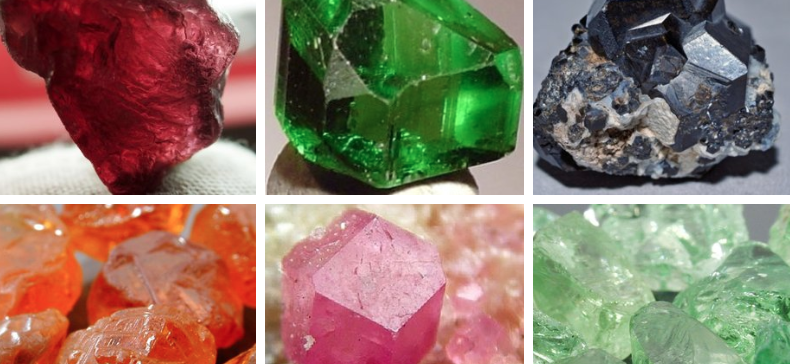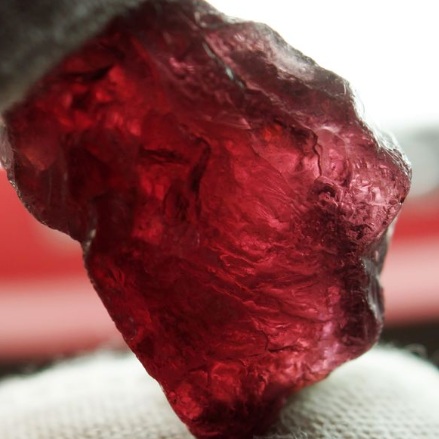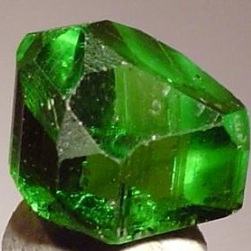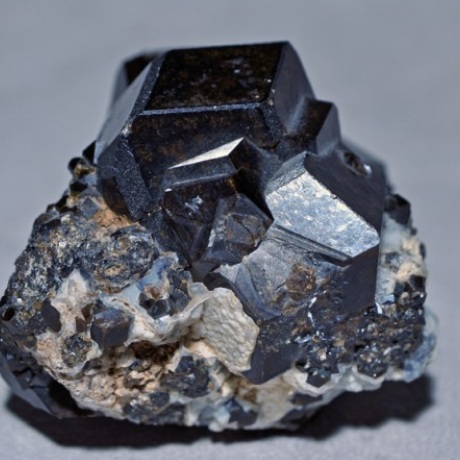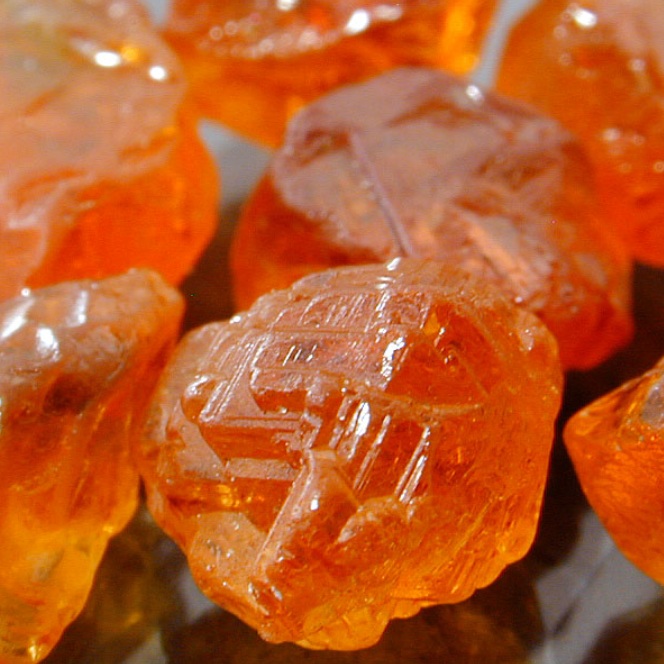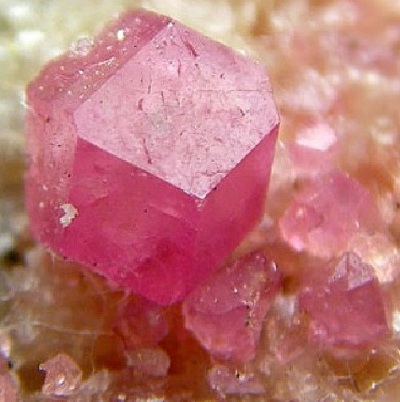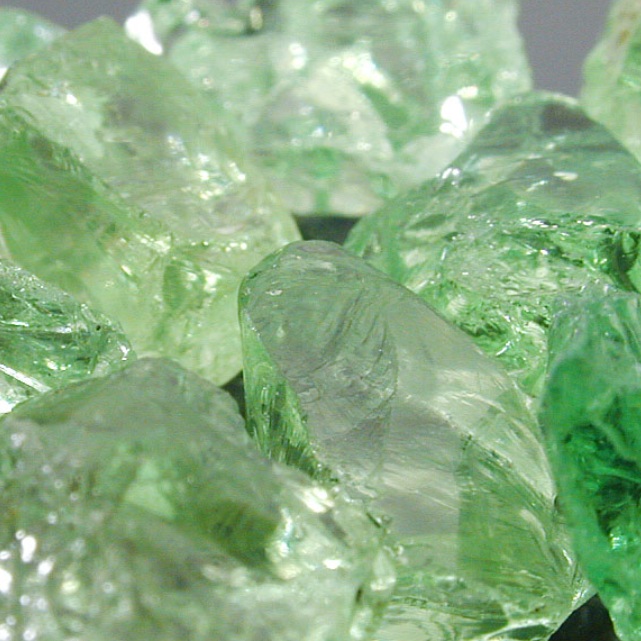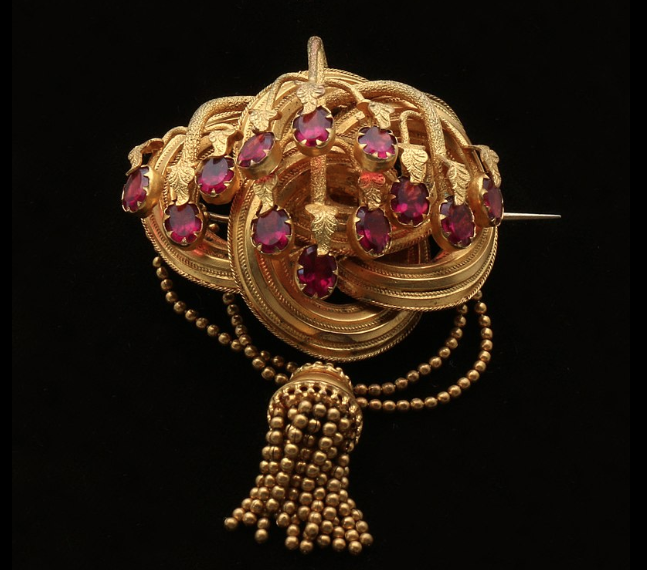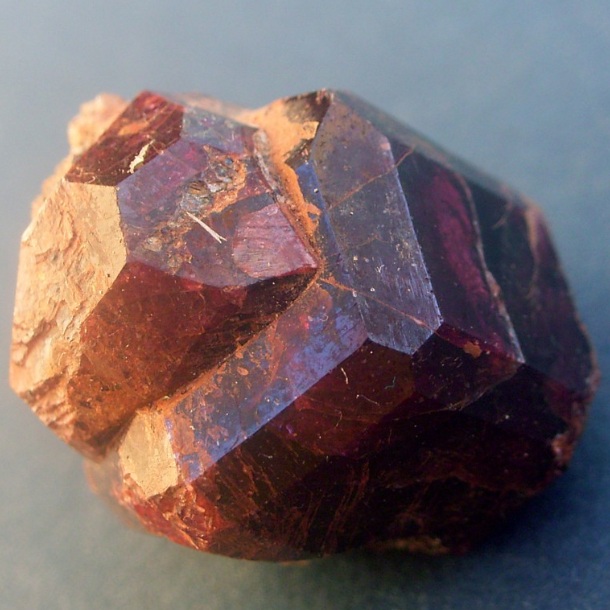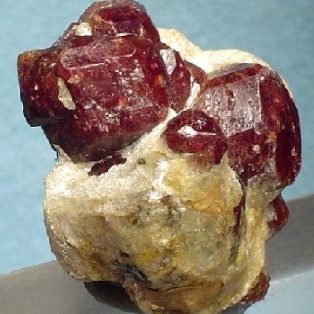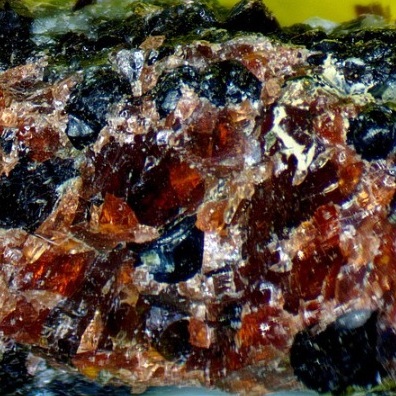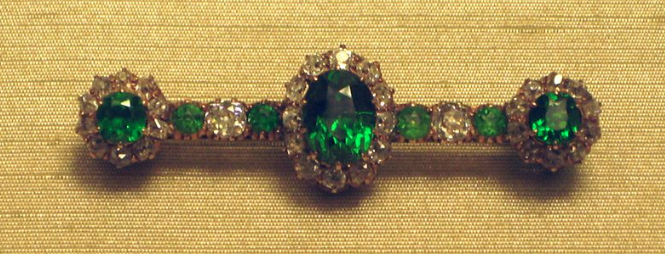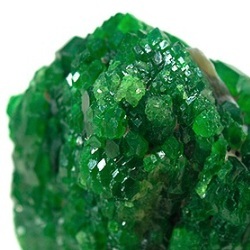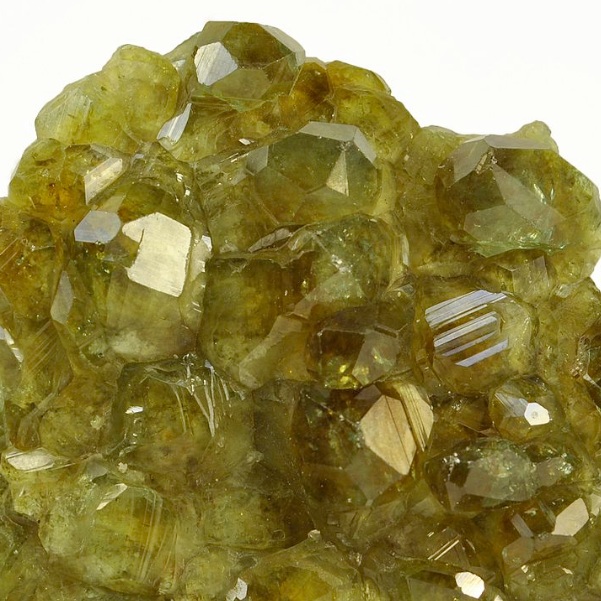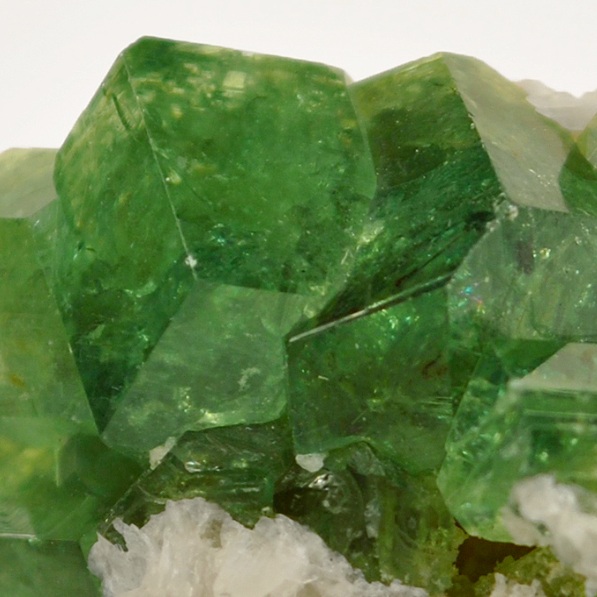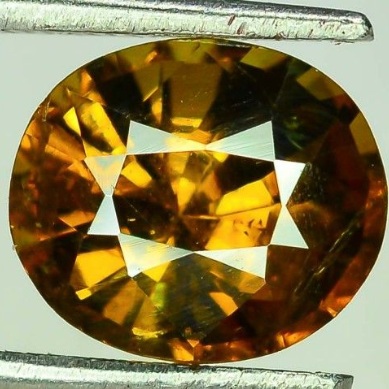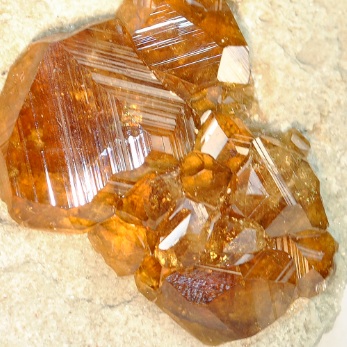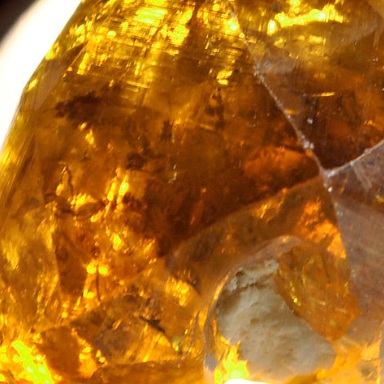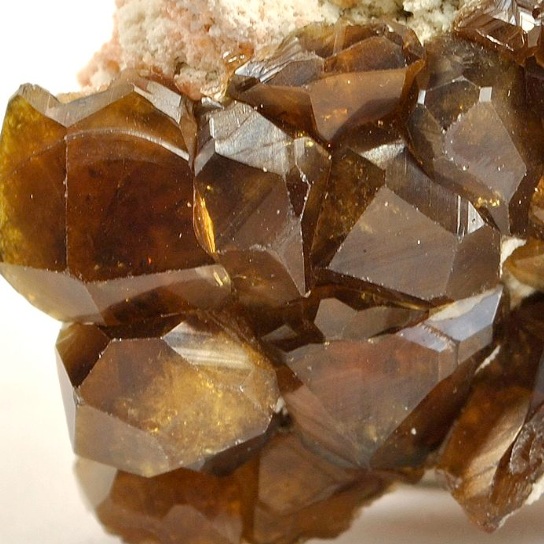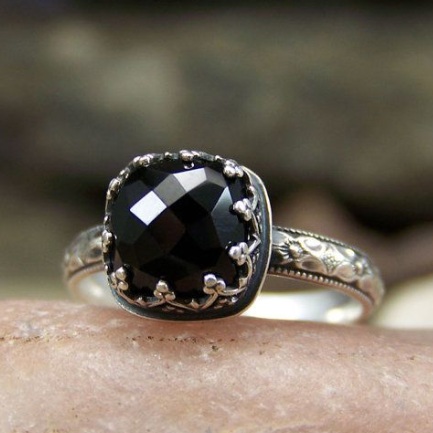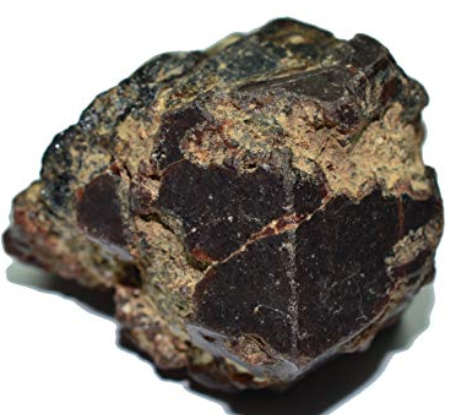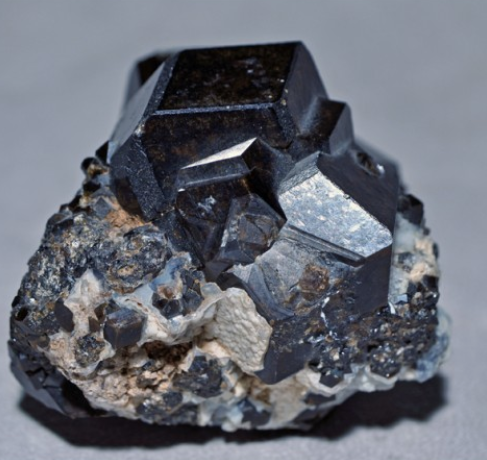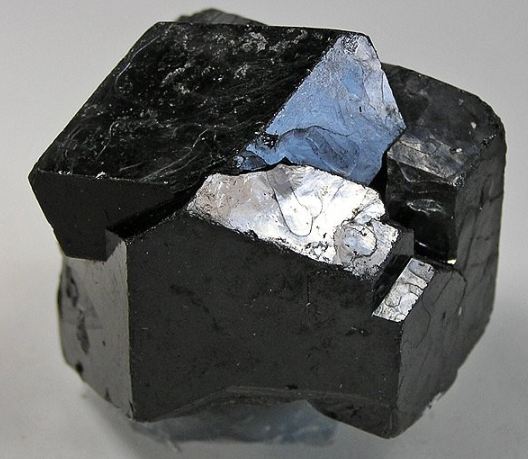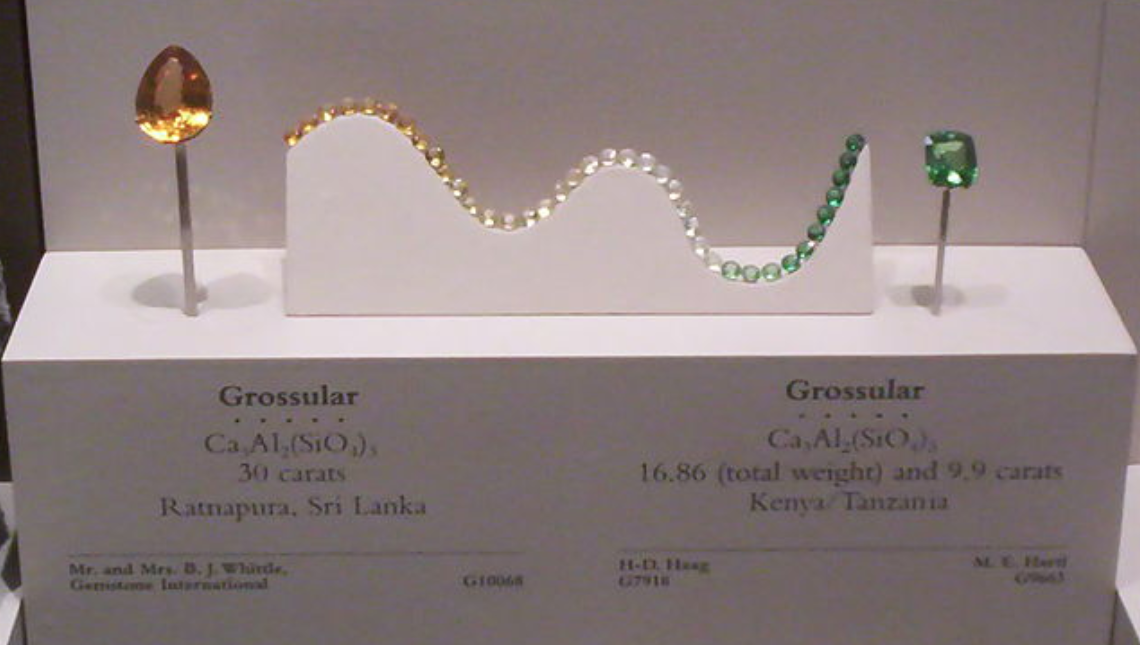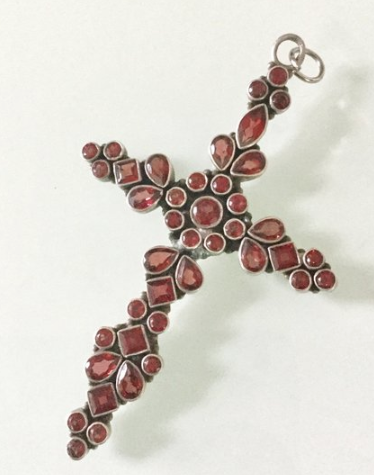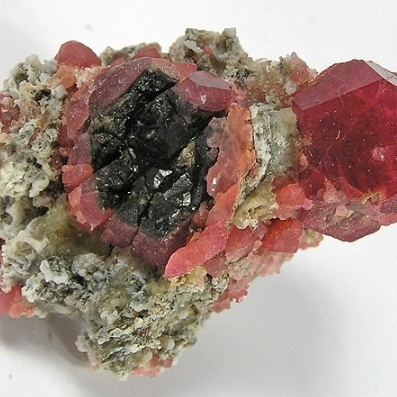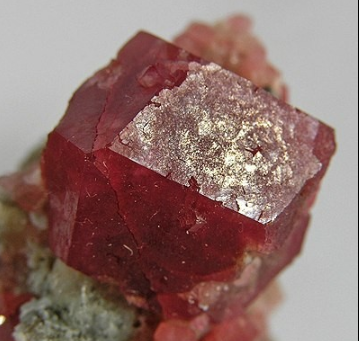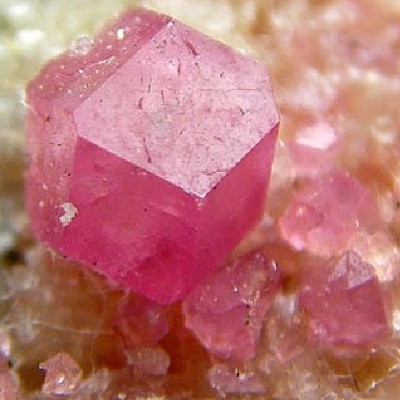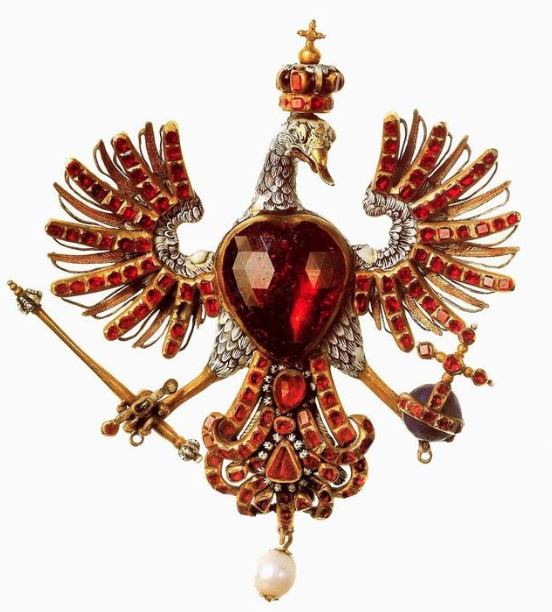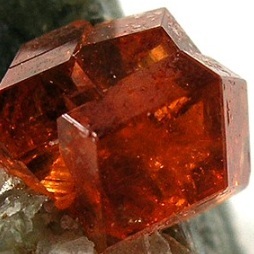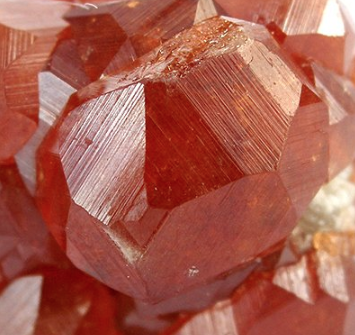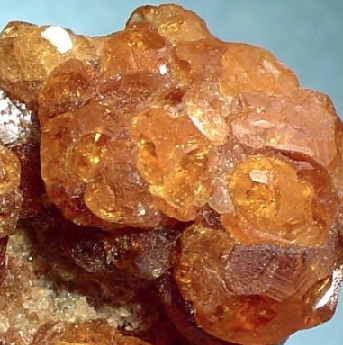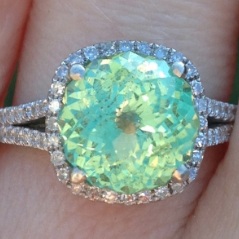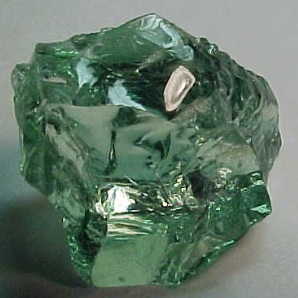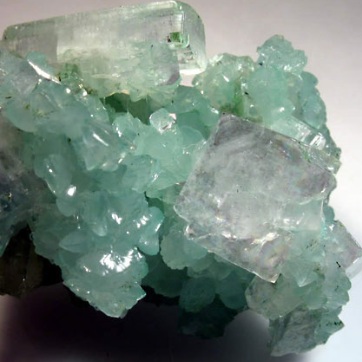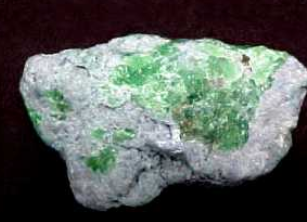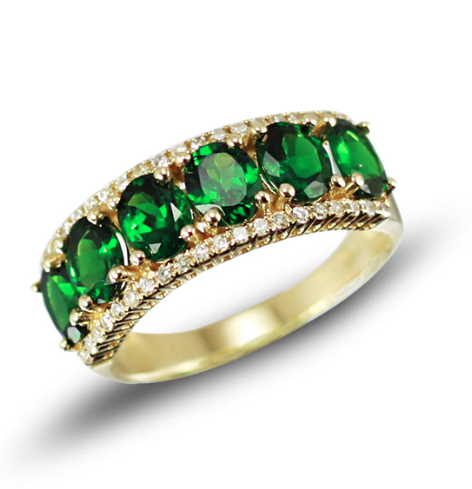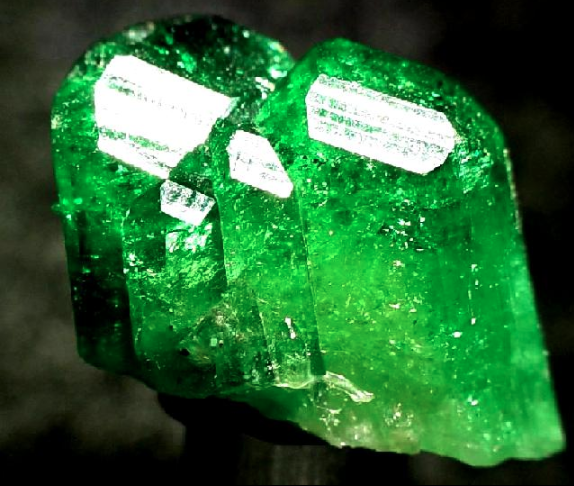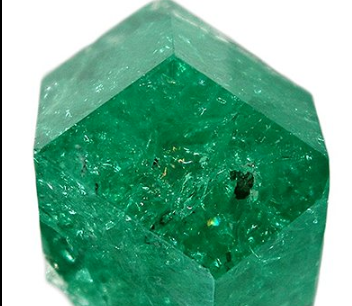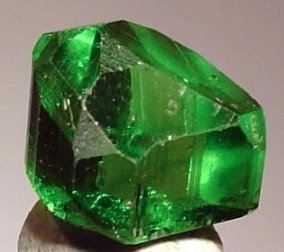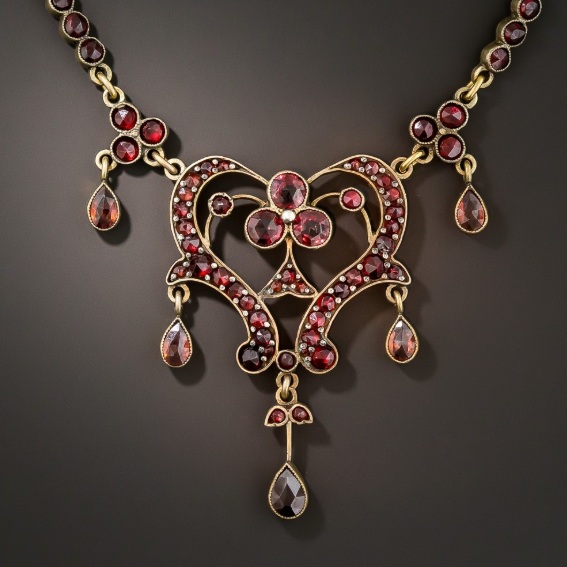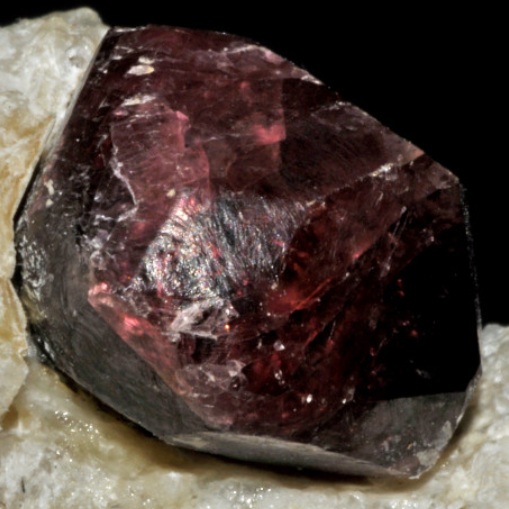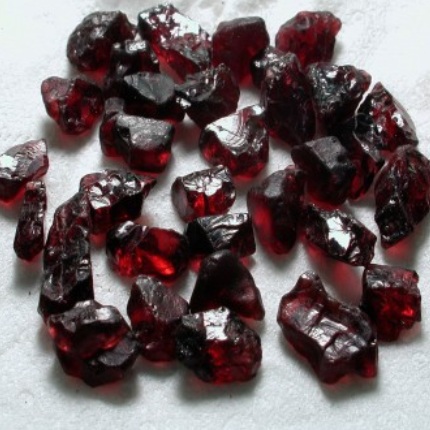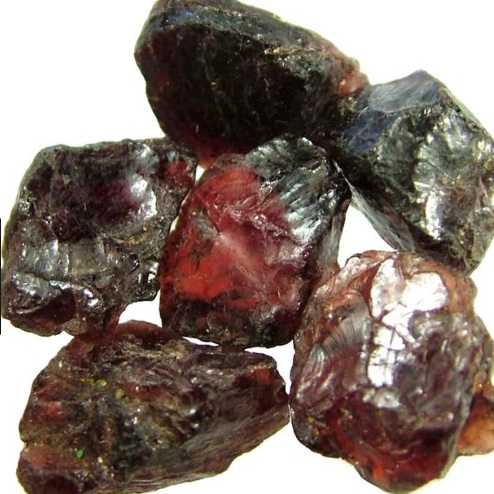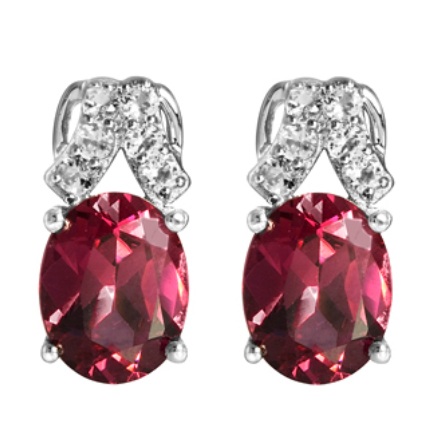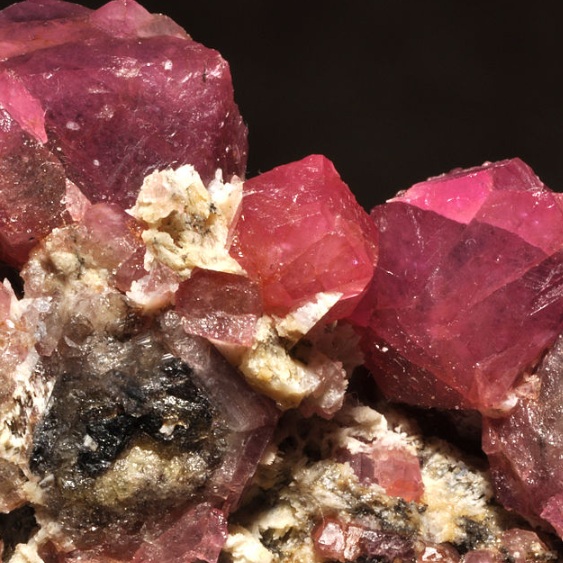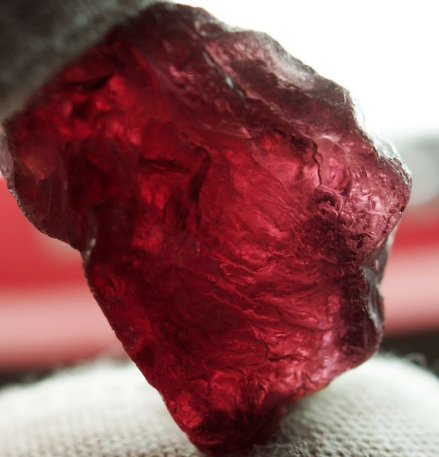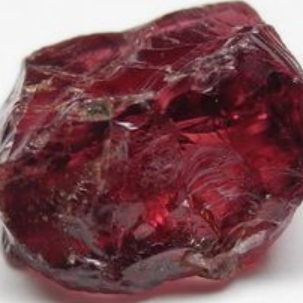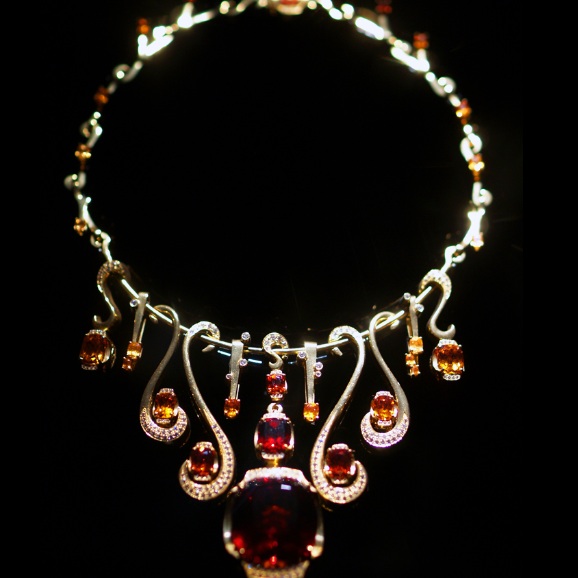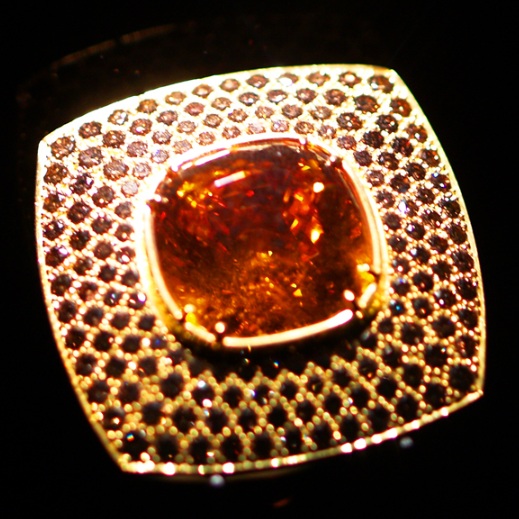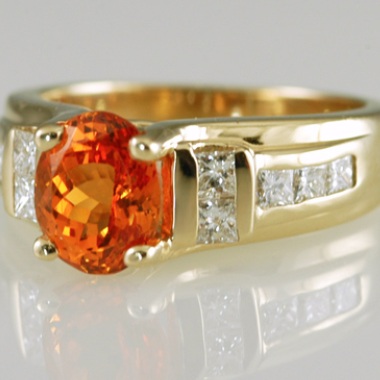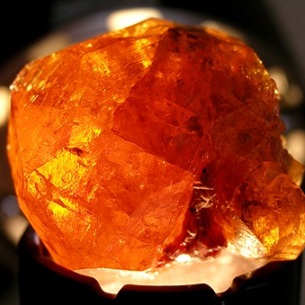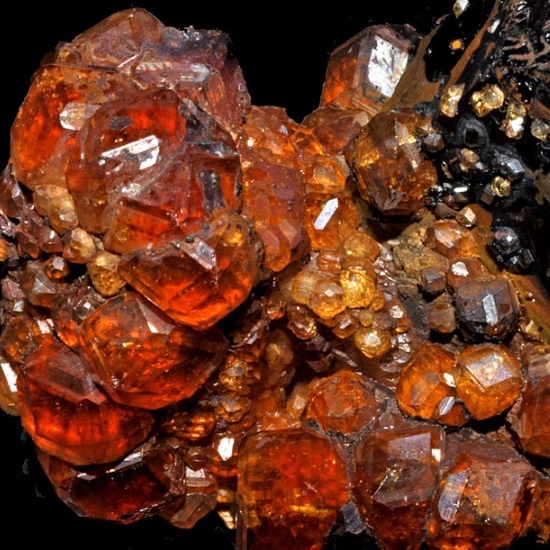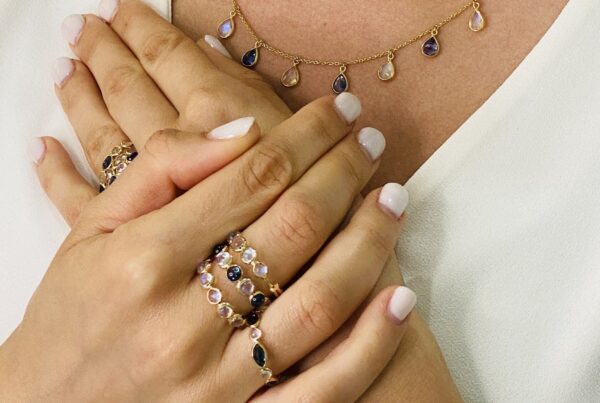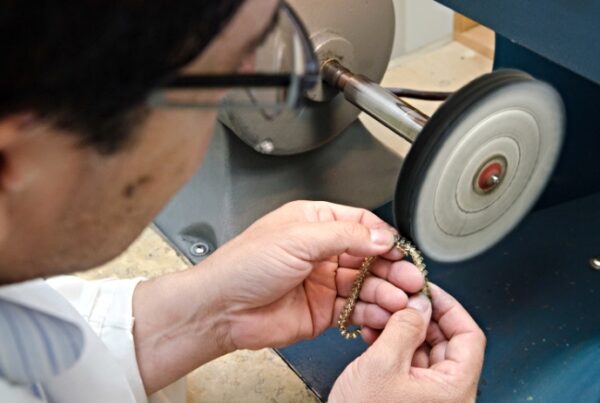GORGEOUS GARNETS!
Garnet, January’s birthstone and the second anniversary gem, has been highly prized throughout the ages for its beautiful rich red color. But did you know that garnets come in a rainbow of colors? Garnets come in colors that include nearly colorless, rich red, purple pink, yellow, vibrant green, orange, orange-brown, brown, and even black. “Garnet” describes a group of several closely related minerals with more than twenty categories, called species. Only five species, however, are used in commercial jewelry making: almandine (also called almandite), andradite, grossular (grossularite), pyrope, and spessartine. The different colored varieties of garnet are usually referred to by specific identifying names.
ALMANDINE GARNET
The most common species of garnet, most almandine is opaque and unsuitable for jewelry. Only the less commonly found dark red crystals that are transparent to translucent in appearance are considered gem quality. Although almandine is found throughout the world, gem quality crystals are mined only in India, Sri Lanka, China, Madagascar, Australia, Brazil, and the U.S. (Alaska, Idaho, North Carolina, and New York).
Shown: Victorian Brooch and raw Almandine crystal.
ANDRADITE GARNET
This species features the most lustrous of the gem quality garnets. Andradite varieties are the rare vivid green Demantoid, the rarer yellow Topazolite, and black Melanite.
DEMANTOID
Considered one of the world’s most valuable and rare gemstones, Demantoid garnet crystals range in color from vivid green to bright olive green to deep emerald green. While historically Demantoid garnet has been mined in exclusively in Russia, in recent times large deposits have been discovered in Namibia, with smaller deposits located in Madagascar, Afghanistan, Iran, and Italy.
Shown: Antique Russian Demantoid brooch, circa 1880-1890 and raw Demantoid crystal.
TOPAZOLITE
Topazolite garnets range in color from yellow to brownish-yellow. Topazolite is much rarer than Demantoid. Its gem quality crystals are usually very small, resulting in very small carat weight cut gems. Gem quality Topazolite is found in Germany, Italy, Namibia, and parts of the U.S. (Arizona and California).
Shown: Rare 2.93 carat Topazolite cut gemstone from Pakistan and raw Topazolite crystal.
MELANITE
Melanite garnet is a lustrous, opaque black gem. It is often referred to as “titanium andradite” because it contains approximately 1-5% of titanium oxide. Melanite is mined in Russia, Azerbaijan, Mali, Mexico, Germany, France, Italy and the U.S.A. (Arizona, Colorado and California).
Shown: Sterling silver Melanite ring and raw Melanite crystal.
GROSSULAR GARNET
The Grossular species comes in almost every color, except blue. It is even available in a rare, near colorless variety. Unlike other garnets, however, gems of this species are rarely red or dark colored. Light to medium in tone, they make brilliant, vibrant jewelry. Because they are usually beautifully translucent, Grossular garnets are popular for en cabochon cut gems, beads, and carvings.
This display at the National Museum of Natural History, Washington D.C. demonstrates the multiple hues of grossular garnets.
ROSOLITE
Rosolite (pink) garnet is found in Mexico. Shown: Mid-century Mexican Rosolite cross and raw Rosolote crystal.
HESSONITE
One of the most valuable Grossular garnets is the translucent Hessonite gem, which comes in rich colors of honey-yellow, deep yellow, golden orange, and a brown-red cinnamon color. The most desirable color is bright golden orange. Most Hessonite is sourced from Sri Lanka, but it is also mined in Brazil, India, Canada (Quebec), Madagascar, Myanmar, Tanzania, and the U.S. (California).
Shown: Polish Eagle Brooch, Warsaw, circa 1880-1890, and raw Hessonite crystal.
MERELANI MINT
Merelani MInt garnet is a light green mint gem found in Tanzania.
Shown: Contemporary Merelani Mint garnet ring and raw crystal.
TSAVORITE
Tsavorite is a vibrant green variety of garnet that rivals the most emeralds for beauty. It was first discovered In 1967 in the mountains of north-east Tanzania by British gem prospector and geologist Campbell R. Bridges Although there was great interest shown by the gem trade, the Tanzanian government would not allow tsavorite to be exported. Later, a commercially viable cache was found in the Tsavo area of eastern Kenya. In 1971, Bridges was granted a permit to mine the deposit. Originally known “Tsavolite,” Harry Platt, the then vice-president of the New York jewelers Tiffany & Co., wrote a complimentary article about the new gem for the Lapidary Journal. He renamed the gem “Tsavorite” in his article, later saying that it was an easier word for English speakers to pronounce.
Shown: Contemporary Tsavorite ring and raw crystal.
PYROPE GARNET
Pyrope is the most widely used garnet for jewelry. The name comes from ancient Greek for “fire: and “eye.” Pyrope is especially noted for its transparency and clarity. Until recent history, Pyrope, the only garnet that is always red, was often been mistaken for ruby. The Crown Jewels of many royals, originally believed to be set with rubies, were later discovered to be set with red garnets. Large deposits of pyrope garnet were discovered in Bohemia (Central Europe) around the 16th century. Czech garnets known for their especially deep red color and are often referred to as “Bohemian Garnet” or “Prague Garnet.” Other Pyrope sources include Scotland, Switzerland, China, Madagascar, Myanmar, South Africa, Sri Lanka, Tanzania, the United States (Arizona and North Carolina), and Canada (Quebec.)
Shown: Bohemian garnet necklace from turn-of-the-century Czechoslovakia and Pyrope raw crystal.
RHODOLITE – Pyrope-Almandine
First discovered in 1882 in the hills of North Carolina, Rhodolite garnet is a mix in chemical composition of Pyrope and Almandine garnet. It is highly prized for its beautiful raspberry-red and purple-red colors. Rhodolite garnet gets its name from the Greek word, “rhodon” meaning “rose colored.”
Shown: Rhodolite and diamond earrings and Rhodolite raw crystals.
SPESSARTITE GARNET
Spessartite is an orange to orange-red form of garnet, named after the Spessart Mountains in Bavaria, Germany. Spessartite is one of the rarest and most uncommon types of garnet is the world. Its pure orange variety is known as Mandarin Garnet and is found in Namibia and Mozambique. The light orange to orange-yellow Tangerine Garnet is also mined in Namibia and Mozambique. The highly prized Malaya Garnet is a reddish-orange color (or more accurately a mixture intermediary between Spessartite and Pyrope) found in Tanzania and Kenya. The most valuable Spessartite is a bright, orange-red color as found in Virginia and California in the U.S.A. Less valuable Spessartite stones are dark red or black. Gem quality Spessartite is found in only extremely limited geographical areas in parts of Germany, the U.S.A. (Virginia, Nevada, Utah, Colorado, California), Brazil, Greece, Namibia, Pakistan, Madagascar, Japan, New South Wales, and Australia. Stones that are an orange-yellow color are sometimes confused with Hessonite garnet.
Malaya Garnet and Diamond necklace by designer Ernesto Moreira, Houston, TX. 22kt Yellow gold necklace with large deep red Malaya Garnet (99 carats) as center stone, (3.015 carats) of pave diamonds, and (50.65 carats) of garnets varying from deep red to bright orange.
Mandarin Garnet (39.35 carats) and (1.82 carats) of pave cognac diamonds 18k yellow gold diamond ring designed and created by Ernesto Moreira, Houston, Texas, U.S.A.
Contemporary Tangerine Garnet and Diamond Ring.
For more information about the history, folklore. and properties of garnet, check out The Story of Garnet.
We invite all gemstone lovers to visit our store in Miami’s beautiful Pinecrest Village. Our jewelry features the most beautiful gems sourced from around the world! Located at 11219 South Dixie Highway, Miami, Florid, we always have plenty of free parking. Our hours are Monday – Saturday, 10am – 6pm. If you have something special in mind or any questions, just give us a call at (305) 252-1123 or email us at info@turleyjewelers.com. We will be happy to assist you!
